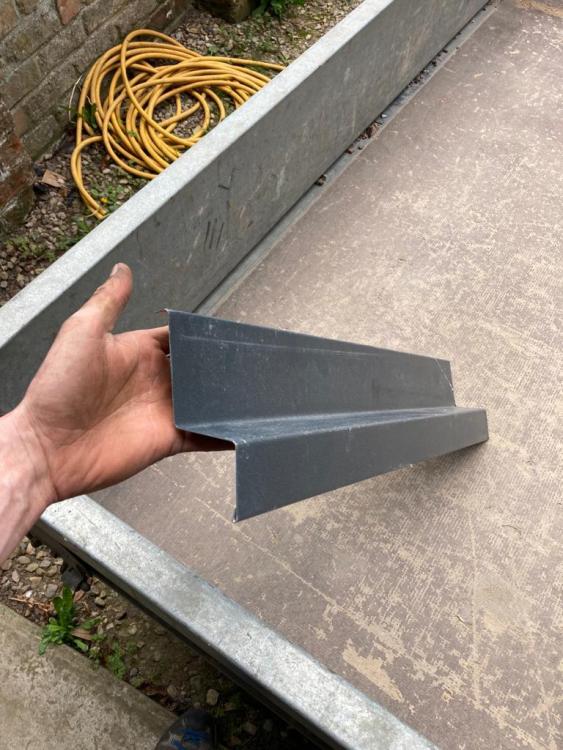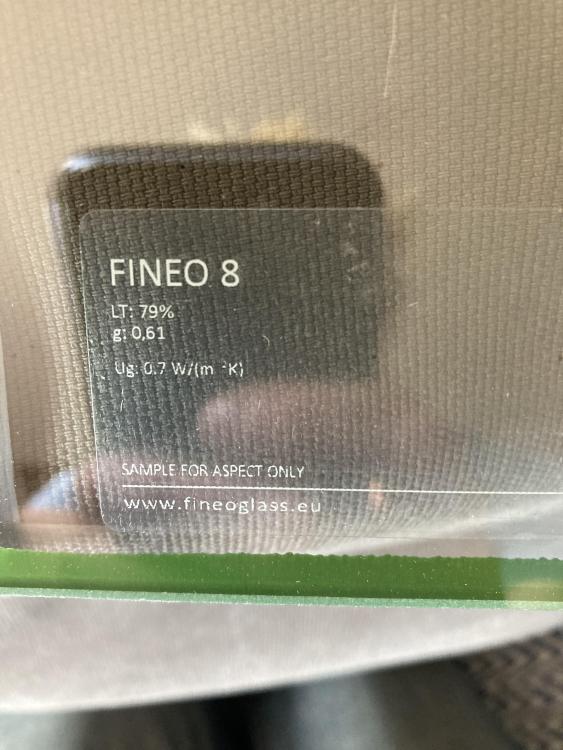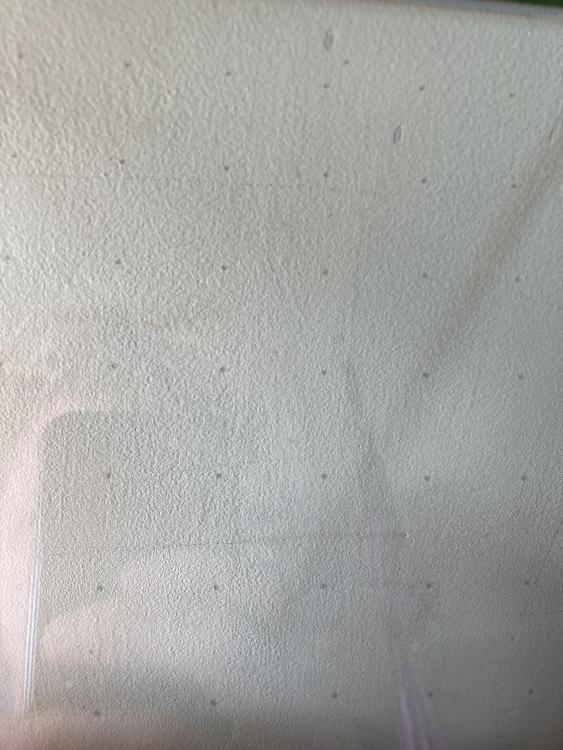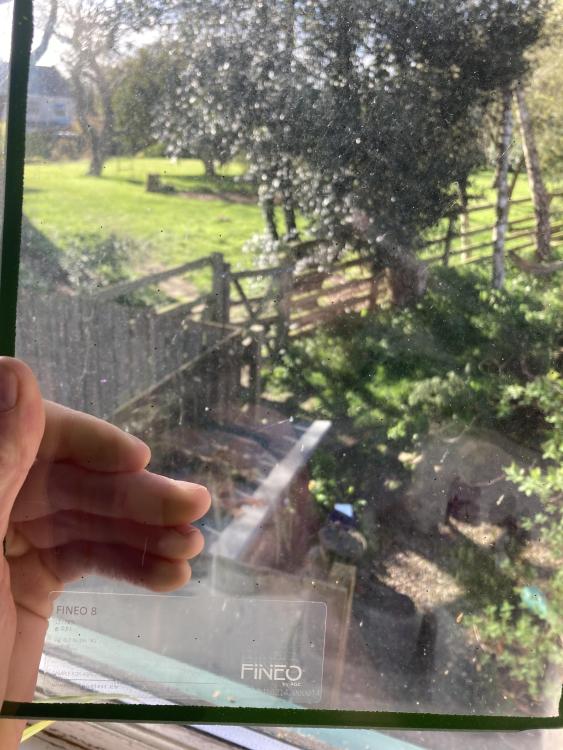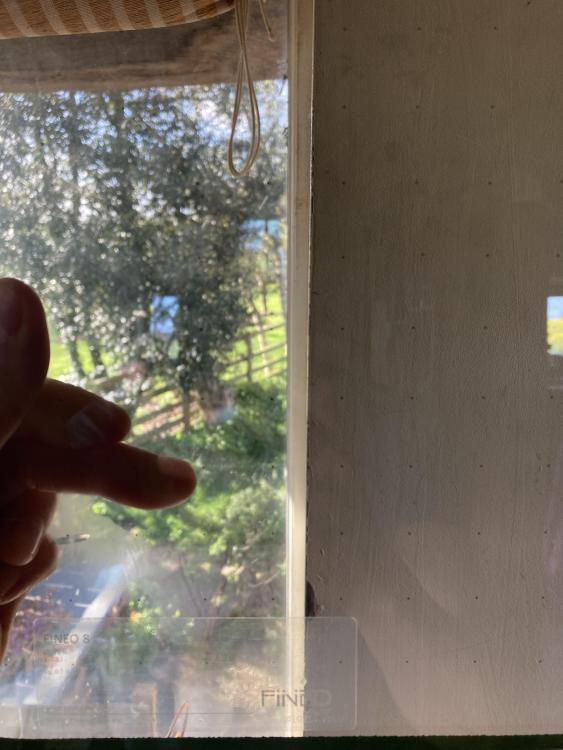
Rishard
Members-
Posts
134 -
Joined
-
Last visited
Everything posted by Rishard
-
Most cost effective way to get to passive standard using block
Rishard replied to CalvinHobbes's topic in Heat Insulation
I am building using this same method of insulating blocks for the inner leaf below dpc on my block-cavity-block house. My concrete footing is currently 900mm below ffl. Is there any merit in using the insulating blocks all the way down to the footing or just say 2 courses below ffl? Likewise with the xps insulation in the cavity. Is it better to go the full 900mm down with the xps or just the same 2 courses as the insulating blocks do you think? -
Timber frame double garage with doors on eave side
Rishard replied to jayc89's topic in Garages & Workshops
Most oak timber frame car ports are built this way. I just built one this way for my own garage. I’m a carpenter so built it all, I did get a quote from an oak frame supplier for the same design though. No doubt it could be built from a softwood such as larch in similar section sizes to an oak frame if you were set on it being timber frame. -
Rooms above garage - Thermal envelope?
Rishard replied to SuperJohnG's topic in New House & Self Build Design
Morning, I’m just going through a similar process with a separate double garage with room above, timber frame. I have the option to carry the airtight membrane under the joists which form the garage ceiling. I have a pitched roof with 2x gables. Would I be best joining the membrane to the external membrane on the timber frame gables as you say? Also, I can detail the rafter eaves so the membrane can carry on up past my joist ends to meet my roof membrane, would this be best rather than turning it in on the joists like a Tony tray? My roof pitch is 45* and the wall plate is on top of my joist ends over load bearing walls. I intend to split my rafters at the joist end point so I can have some ‘dummy’ oak rafter feet as the below garage is oak frame. I have done this detail on a few oak buildings but the airtightness hasn’t always been a priority. This being my own garage, it is, alongside good insulation ect. The point where I split the rafters would be where I can connect up ceiling to roof membrane. -
I’ve seen it done in a few ways. Sail the cladding over the face brickwork. This avoids needing flashing (depending on cladding type) I’ve also used plinth bricks which need lead flashing to partially cover. This method looks more traditional however the plinth bricks can be quite expensive. I’ve also used aluminium flashings pre bent to replace both brick and lead and creates a modern looking detail. The aluminium lengths were round hot £30 for 3m bent to any detail supplied and plasticoated. My local brick company supply plinth bricks at £3.50ea + vat…
-
We have similar issues with trees we have removed from the site dictating trench depths. We had a fairly basic and cost effective soil survey done with samples we provided. These provide very useful information for the behaviour of your soil. Our engineer designed the trenches based very much of the nhbc guidelines. The nhbc guidelines seem to be the measuring stick to which all bco’s use. Our bco is very well informed about trees and also soils in our local area. At the end of the day, they have to approve what you will use so its always worth discussing options with them.
-
Is it flush to the top surface of the boards? Is it likely to be a place for dirt to gather?
-
I was in the understanding that thicker was better, acting more like a night storage heater. I guess it all depends how well insulated the house is and how reactive you want the heating to be? It seems most with thicker slabs and good insulation are heating overnight where more mass is preferable?
-
I can send you my engineers annotated plans which he put together for me for the sake of a costing exercise. His final calculations are on going with some of the other calculations for the house. He did recommend some mesh to the top of the slab but like I said previously, only in a few places where there would be hogging moments (I believe he called them)
-
-
Sample arrived today. The pillars are quite clearly visible to the eye from within 2m off the glass. Maybe made worse by the fact they are black… the sample they have sent me does state the 0.7W/m2k and the unit is 7.7mm.
-
The 4m span is the reduced span due to adding a dwarfwall/footing to help with either b&b or suspended slab. I poured a raft for my double garage on the same site and polished the slab as a test run. It worked well and so far no issues. My plan was to polish the main house floor with the aim to reduce the need for both a slab and a screed. I see this may be harder to achieve now but hopefully not impossible. I’m now looking at the Golcar ph slab design, only difference being the void formers in my case. My engineer spec’d the slab reinforcement so I don’t have too much concern regarding the mesh detail, however this isn’t my specialism and I trust he would be confident in his own design. Which details do you think would require great precision? If it’s just one layer of mesh to the base I think the mesh would be a lot easier than jobs I’ve done with several layers/hystools /overlap build ups. Aiming for ph levels of insulation with mvhr, 3G ect. Wouldn’t a 150mm slab with underfloor heating be better suited than a screed for storing more heat? Happy to change design if I foresee the slab finish not being achievable. I have been looking at the jablite void formers which look to simply compress when the ground does heave. I don’t like the look of the ‘just add water’ ones to create a void. I see the Jablite ones as ground baring up until the ground moves, if it moves. Once the soil heaves, does it retract at all? Although we have ‘medium’ shrinkage clay, the void formers are being used to overcome being close to where we had an old, now removed pear tree. All spec being followed directly from nhbc guidelines.
-
Thanks, my engineers spec is a 150mm reinforced slab with a single layer of a393 to the base. No spans greater than 4m for the slab so I would need to add another footing to help there. We may need to add some reinforcement to the top of the slab above these footings for ‘hogging’. I imagine I would need to add an extra footing for b&b to break up larger spans. I originally planned on a ground baring slab to be used as our ff with underfloor heating within. With the added complexity of reinforcing the slab and potential hogging, does using the slab as a ff seem un realistic with the amount of crack potential. We have several dividing walls we can use crack control joints at but in the larger kitchen/diner it would be a shame to use control joints. My aim was to reduce the need for a screed buy polishing the slab (another discussion has already been had on this) Sounds like the options are: Reinforced slab with void formers (potential crack issues). Block and beam with screed. Timber suspended floor.
-
I have medium shrinkage clay and have been advised to use both heave protection in the trench wall and void formers under a suspended slab. I’ve read on here people dealing with poor ground conditions using block and beam and also the void formers. I’m about to cost out which is going to be best for us. I don’t like the idea of a void below the block and beam but wonder if the void former (cordek/Jablite) is also just creating an airspace below the slab by default. I know the suspended slab is designed to overcome this but is it likely to effect the insulation sandwich above the void former and below the slab? Does ground heave retract, or just heave and stay put? A bit off the original posters question but dealing with a similar issue.
-
Hi Craig. The supplier described the unit similar to how you describe. Laminated with a 0.1mm vacuum. The overall lamination being 7.7mm and achieving 0.7uvalue. I imagine they can also be included in a double glazed unit to achieve better uvalues? As always, the facts are never crystal clear. They recommended these for replacement of single glazed panes in traditional sash windows.
-
Has anyone come across Fineo glazing? Vacuum insulated glazed units claiming to perform as well as triple glazing. Units are coming in at around 8mm with a 1mm vacuum cavity. Sounds too good to be true. Curious to see if it is. They are sending me samples this week along with their pricing.
-
I’ve done several of these floor repair jobs on listed buildings. Often they want very little of the original fabric to change so the work arounds are to patch and repair where necessary. I buy replacement re-sawn old pine boards for any replacements. Issue with replacements is you can’t keep both the tongue and groove on the old board and include a new tongue and groove on the new board. You can half lap one side but it is rather labour intensive and requires nice clean cuts and a router. Many floors we have done where the replacement boards have been fitted all seem to shrink after they acclimatise at the 20+degrees inside the house over a year. If there is any flex in the old flooring, any ‘filler’ material is likely to pop out if it is brittle, like wood filler. If you plan to re-sand the whole floor then using timber ‘slithers’ works very well. 1m long strips of wood cut into a slither sizing from 0mm-6mm/12mm. If the floor is well fixed down the slithers can be glued and hammered into the gaps to make up the gap. These can then be planed flat and sanded with the whole floor. This in my opinion is the best solution. Or, lift the old boards and re fit if it’s an option.
-
Simple answer is yes, you can stop the wall plate either side of lintel and use a ledger board bolted to the masonry and into the lintel to fix your new rafter ends too. You can mount the hangers to the timber ledge. Do you have a valley junction in this area too with it being and Lshape build?
-
Siberian larch vs sweet chestnut cladding
Rishard replied to PeachyBeechy's topic in General Construction Issues
My counter battoning is concrete screwed if going into blockwork. There is no need for dpc, I’ve never heard of dpc behind cladding as it is usually ventilated to some degree. Often there is a breathable membrane when applied over timber frame ect. I fix the cladding with stainless steel pins out of a nail gun. Either surface on wide boards or secret nailed on small profile boards. There is almost no movement across the cladding width or length so I wouldn’t worry about movement with thermowood. -
Vaulted roof insulation condensation risk?
Rishard replied to LinearPancakes's topic in Heat Insulation
I had the same feeling about the pir being taped acting as a vcl. My supplier of insulation did a condensation risk analysis of a similar build up to what you described. All seemed well. Does anyone know the benefits of an intello style membrane with pir if it’s being taped as a vcl? Is it double insurance for reducing moisture from the room? Or is it better targeted at more vapour open insulations? -
I use HMT drill bits on steel. Cheaper than a mag drill but more than regular hss bits. I paid about £40 for a bit years ago and it still ploughs through steel beams without much effort. Use a good drill or they even do impact bits. Watch any of their videos to see them in action. I would definitely recommend these. https://holemaker-technology.com/collections/metal-drill-bits
-
Dimensions also would be helpful.
-
Passivhaus window suppliers to UK - recommendations
Rishard replied to markharro's topic in Windows & Glazing
How are your quotes stacking up against each other?

